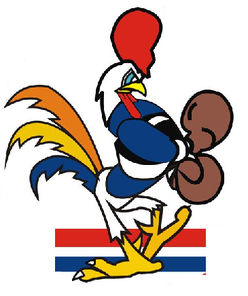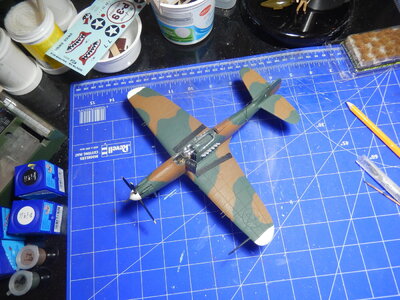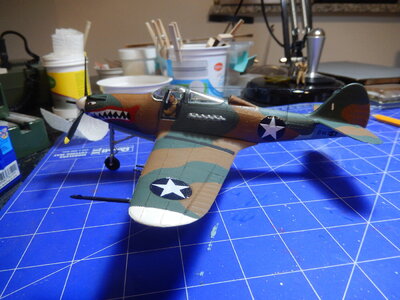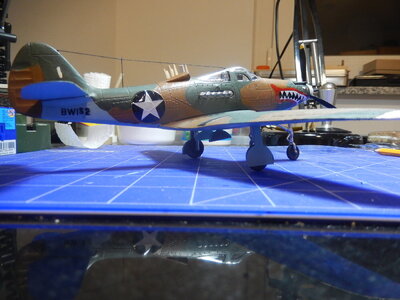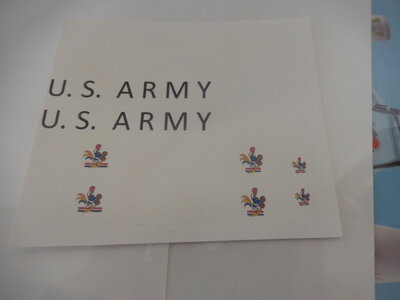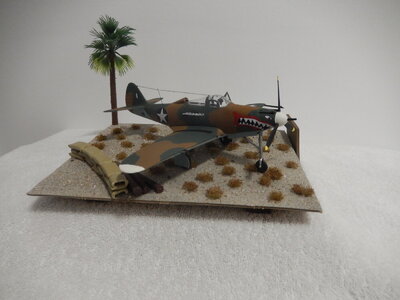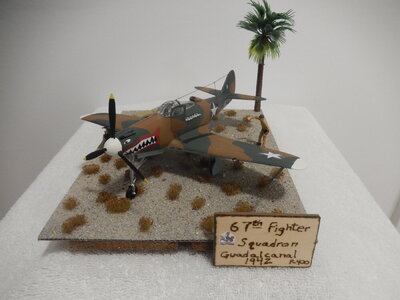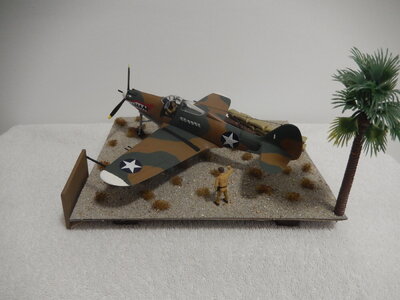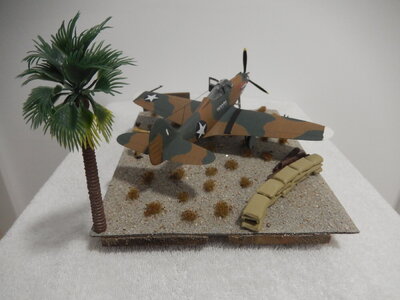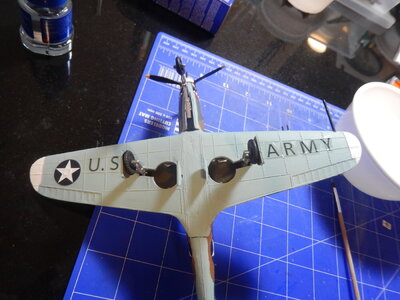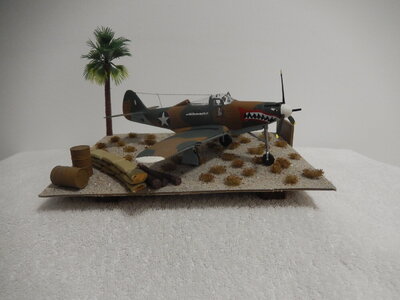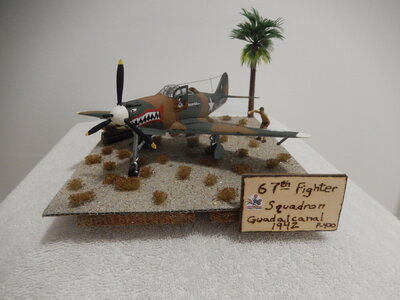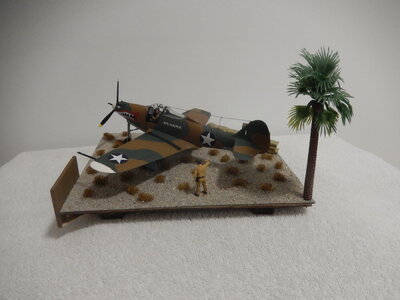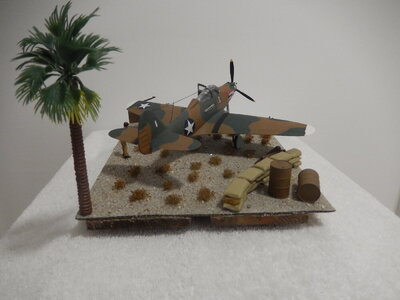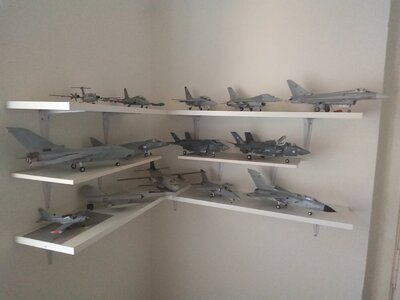As I patiently wait for my care package from Model Expo to arrive (probably sometime after the turn of the year), I was wondering what to do to occupy my time. About a week ago I was wandering around in a local thrift shop and found a model by a US company called Atlantis. I'd never heard of the company but the model intrigued me - the P-39 Airacobra. What especially intrigued me was the artwork on the box which led me to do some internet research.
The plane (P-39 and P-400) was flown by the USAAF 67th Fighter Squadron from 1942 into late 1943/early 1944. The 67th operated in the South Pacific theater mostly in and around the Solomon Islands. The P-400 was the export variant of the P-39 and was intended for UK use. Unlike the P-39, which had a 37mm cannon firing through the nose, the P-400 had a 20mm cannon. I knew a little of the history of the type on Guadalcanal from my time in the US Marines and my interest in WWII in the Pacific, but what my research turned up was interesting. The 67th Fighter Squadron was the first US Army Air Forces (USAAF) squadron to arrive on Guadalcanal and 3 of the squadron's airplanes played a pivotal part in the Battle of Bloody Ridge in mid-September 1942. My research turned up a painting of that flight of 3 P-400s so I decided to build my kit as a P-400 on the ground just before takeoff.
The kit had a few issues with some of the pieces - casting holes in the 2 figures and a lot of excess flashing - and a couple of items (instrument panel and engine access panel behind the pilot) were not provided. The holes were solved with some modeling putty and the missing pieces simulated with pieces cut from some old ice cream bar sticks that I've been saving. Because the image of the painting I was following did not show the belly drop tank on the 3 aircraft I decided to leave it off - another hole to fill. I also filled the hole provided for the stand that came with the model; no need for it in a diarama.
The P-39/P-400 aircraft has its engine mounted behind the pilot with armament (rather large cannon and 2 machine guns) and ammo installed front of the pilot. In an actual aircraft, the forward weight would offset the engine weight and the aircraft would sit properly on its tricycle landing gear. Unfortunately the center of gravity of the model is all rearward so steps needed to be taken to counteract the rearward weight distribution. Not having any modeling clay I installed a suitable bolt with 3 nuts just behind the propeller. Unfortunately, once the fuselage, wings and empennage were all glued together that did not prove to be enough counterweight - the model was still tail heavy. Luckily with the landing gear down I was able to glue 4 more nuts into the forward part of the wing (2 on each side of the fuselage) allowing the model to sit properly on its landing gear. To make painting somewhat easier I primed everything (except the inside of the fuselage) with gray automotive primer
I still have painting to do (brown & green camouflage on the upper surface of the wings and empennage), decals to be added and the diorama of a part of Cactus One (Guadalcanal's airstrip) to create. Part of the work will involve creating my own decals (squadron insignia and 'US ARMY') since neither is in the supplied decal pack. I'll also rework the aircraft registration and tail number to reflect those from one of the aircraft in the painting. (Research showed that the P-400s at Guadalcanal, in addition to the shark mouth markings, had the squadron insignia [a fighting cock] painted on the doors of their P-400s.)
So more work still to do. Next time I post I'll have pics of the finished diorama.
Happy holidays to all!
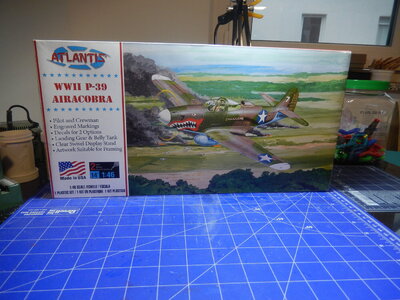
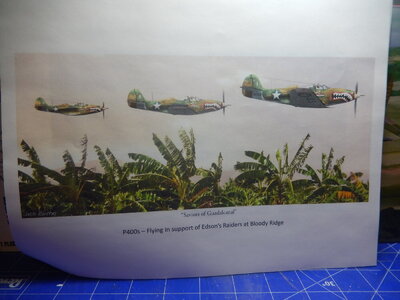
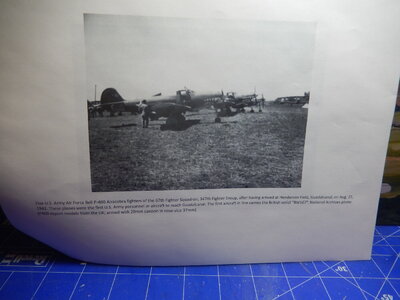
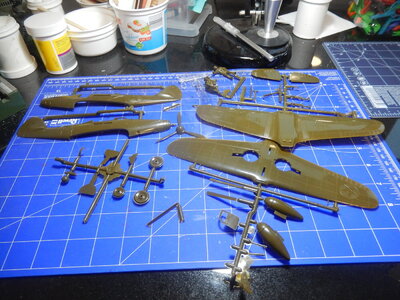
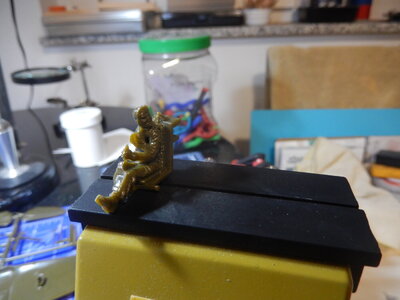
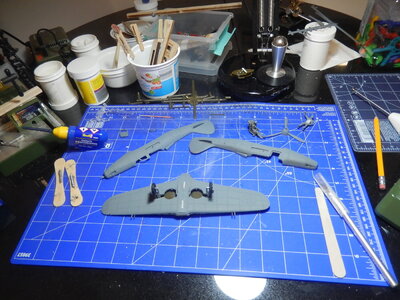
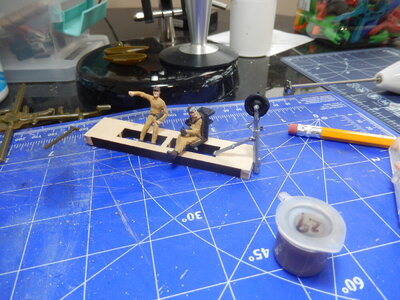
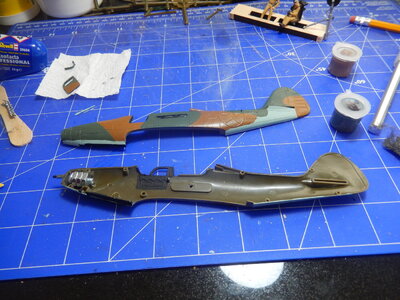
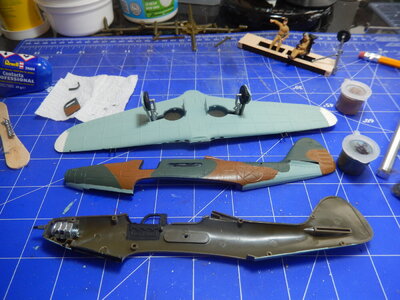
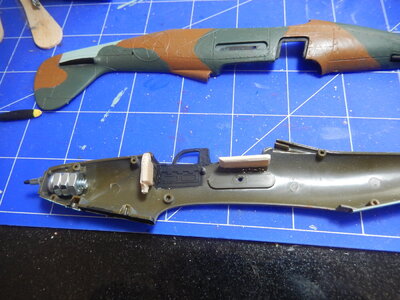
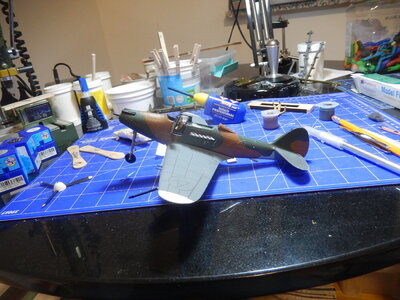
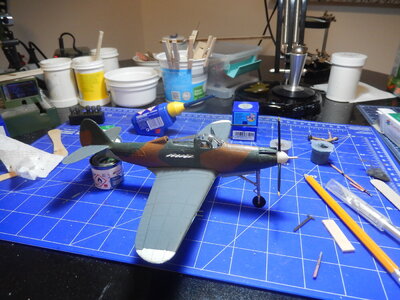
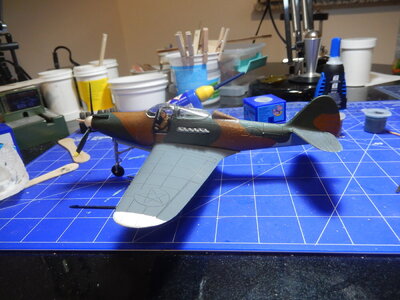
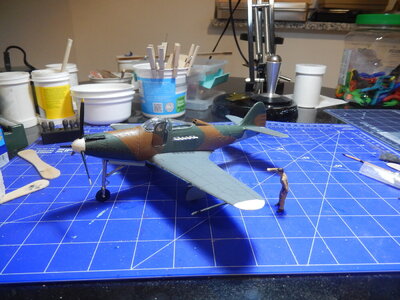
The plane (P-39 and P-400) was flown by the USAAF 67th Fighter Squadron from 1942 into late 1943/early 1944. The 67th operated in the South Pacific theater mostly in and around the Solomon Islands. The P-400 was the export variant of the P-39 and was intended for UK use. Unlike the P-39, which had a 37mm cannon firing through the nose, the P-400 had a 20mm cannon. I knew a little of the history of the type on Guadalcanal from my time in the US Marines and my interest in WWII in the Pacific, but what my research turned up was interesting. The 67th Fighter Squadron was the first US Army Air Forces (USAAF) squadron to arrive on Guadalcanal and 3 of the squadron's airplanes played a pivotal part in the Battle of Bloody Ridge in mid-September 1942. My research turned up a painting of that flight of 3 P-400s so I decided to build my kit as a P-400 on the ground just before takeoff.
The kit had a few issues with some of the pieces - casting holes in the 2 figures and a lot of excess flashing - and a couple of items (instrument panel and engine access panel behind the pilot) were not provided. The holes were solved with some modeling putty and the missing pieces simulated with pieces cut from some old ice cream bar sticks that I've been saving. Because the image of the painting I was following did not show the belly drop tank on the 3 aircraft I decided to leave it off - another hole to fill. I also filled the hole provided for the stand that came with the model; no need for it in a diarama.
The P-39/P-400 aircraft has its engine mounted behind the pilot with armament (rather large cannon and 2 machine guns) and ammo installed front of the pilot. In an actual aircraft, the forward weight would offset the engine weight and the aircraft would sit properly on its tricycle landing gear. Unfortunately the center of gravity of the model is all rearward so steps needed to be taken to counteract the rearward weight distribution. Not having any modeling clay I installed a suitable bolt with 3 nuts just behind the propeller. Unfortunately, once the fuselage, wings and empennage were all glued together that did not prove to be enough counterweight - the model was still tail heavy. Luckily with the landing gear down I was able to glue 4 more nuts into the forward part of the wing (2 on each side of the fuselage) allowing the model to sit properly on its landing gear. To make painting somewhat easier I primed everything (except the inside of the fuselage) with gray automotive primer
I still have painting to do (brown & green camouflage on the upper surface of the wings and empennage), decals to be added and the diorama of a part of Cactus One (Guadalcanal's airstrip) to create. Part of the work will involve creating my own decals (squadron insignia and 'US ARMY') since neither is in the supplied decal pack. I'll also rework the aircraft registration and tail number to reflect those from one of the aircraft in the painting. (Research showed that the P-400s at Guadalcanal, in addition to the shark mouth markings, had the squadron insignia [a fighting cock] painted on the doors of their P-400s.)
So more work still to do. Next time I post I'll have pics of the finished diorama.
Happy holidays to all!
















